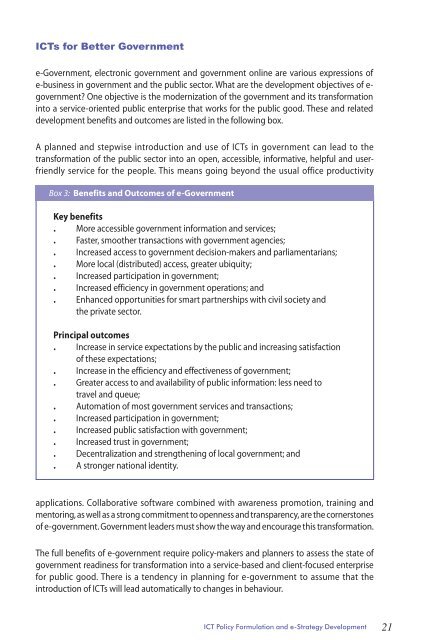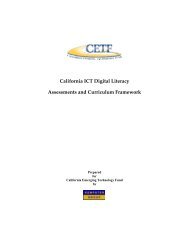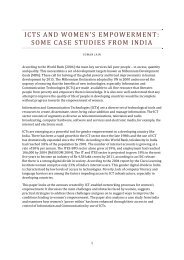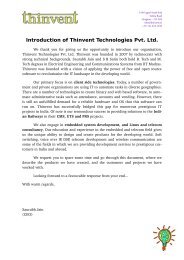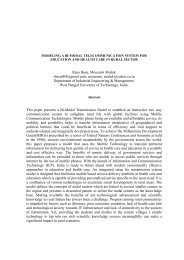ICT Policy Formulation and e-Strategy Development: A ... - un-apcict
ICT Policy Formulation and e-Strategy Development: A ... - un-apcict
ICT Policy Formulation and e-Strategy Development: A ... - un-apcict
Create successful ePaper yourself
Turn your PDF publications into a flip-book with our unique Google optimized e-Paper software.
<strong>ICT</strong>s for Better Government<br />
e-Government, electronic government <strong>and</strong> government online are various expressions of<br />
e-business in government <strong>and</strong> the public sector. What are the development objectives of e-<br />
government? One objective is the modernization of the government <strong>and</strong> its transformation<br />
into a service-oriented public enterprise that works for the public good. These <strong>and</strong> related<br />
development benefits <strong>and</strong> outcomes are listed in the following box.<br />
A planned <strong>and</strong> stepwise introduction <strong>and</strong> use of <strong>ICT</strong>s in government can lead to the<br />
transformation of the public sector into an open, accessible, informative, helpful <strong>and</strong> userfriendly<br />
service for the people. This means going beyond the usual office productivity<br />
Box 3: Benefits <strong>and</strong> Outcomes of e-Government<br />
Key benefits<br />
. More accessible government information <strong>and</strong> services;<br />
. Faster, smoother transactions with government agencies;<br />
. Increased access to government decision-makers <strong>and</strong> parliamentarians;<br />
. More local (distributed) access, greater ubiquity;<br />
. Increased participation in government;<br />
. Increased efficiency in government operations; <strong>and</strong><br />
. Enhanced opport<strong>un</strong>ities for smart partnerships with civil society <strong>and</strong><br />
the private sector.<br />
Principal outcomes<br />
. Increase in service expectations by the public <strong>and</strong> increasing satisfaction<br />
of these expectations;<br />
. Increase in the efficiency <strong>and</strong> effectiveness of government;<br />
. Greater access to <strong>and</strong> availability of public information: less need to<br />
travel <strong>and</strong> queue;<br />
. Automation of most government services <strong>and</strong> transactions;<br />
. Increased participation in government;<br />
. Increased public satisfaction with government;<br />
. Increased trust in government;<br />
. Decentralization <strong>and</strong> strengthening of local government; <strong>and</strong><br />
. A stronger national identity.<br />
applications. Collaborative software combined with awareness promotion, training <strong>and</strong><br />
mentoring, as well as a strong commitment to openness <strong>and</strong> transparency, are the cornerstones<br />
of e-government. Government leaders must show the way <strong>and</strong> encourage this transformation.<br />
The full benefits of e-government require policy-makers <strong>and</strong> planners to assess the state of<br />
government readiness for transformation into a service-based <strong>and</strong> client-focused enterprise<br />
for public good. There is a tendency in planning for e-government to assume that the<br />
introduction of <strong>ICT</strong>s will lead automatically to changes in behaviour.<br />
<strong>ICT</strong> <strong>Policy</strong> <strong>Formulation</strong> <strong>and</strong> e-<strong>Strategy</strong> <strong>Development</strong><br />
21


